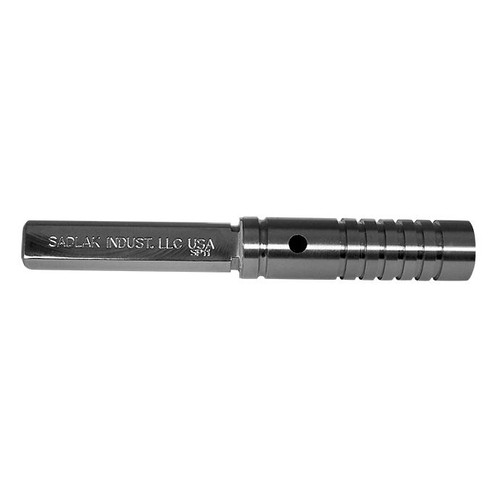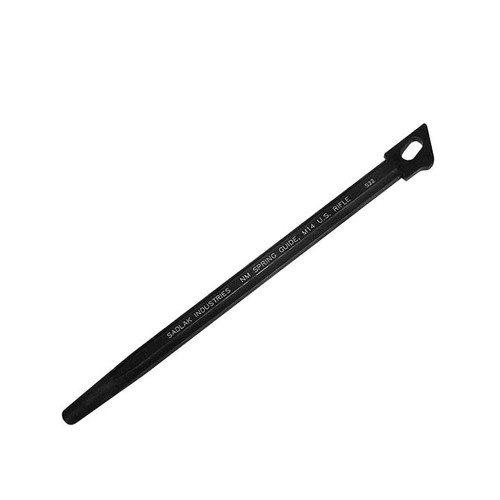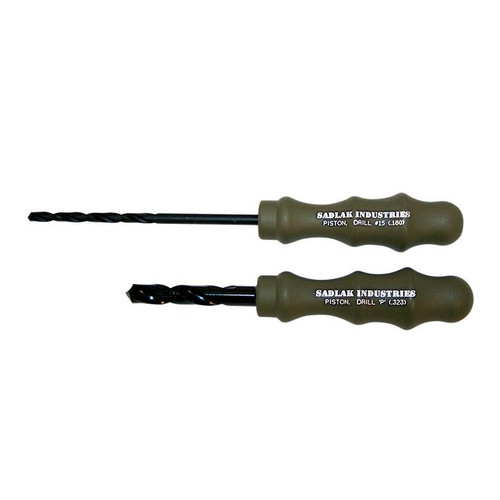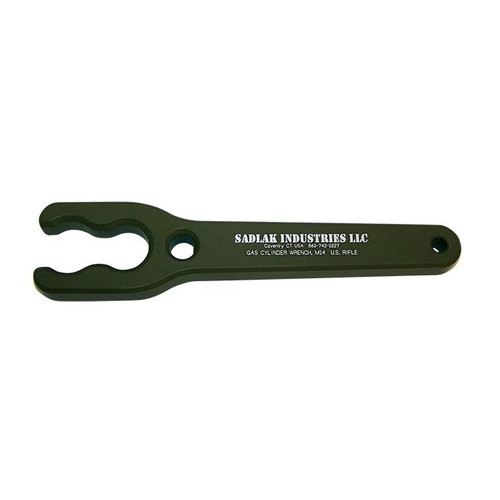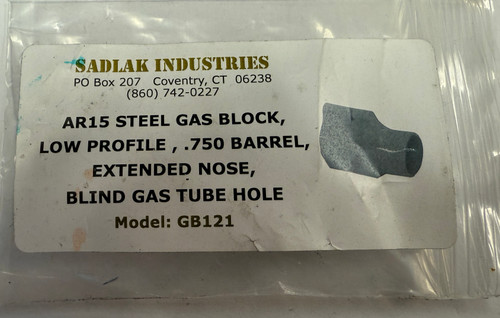SADLAK manufactures national match quality precision pistons using premium-grade, heat-treated stainless steel with a highly polished surface. The stainless material and heat-treating operations are both certified to assure that quality and all critical dimensions are individually inspected.
Our precision pistons are made to the exact GI specifications with all critical dimensions individually inspected. The 420 stainless material and heat-treating operations are both certified to assure quality. The pistons have a highly polished surfaced using a non-contact electro-polishing method that maintains tolerance on the critical diameter and does not roundover the edges on the grooves.
About the Groove in the GROOVED NATIONAL MATCH PISTON
The alteration to the pistons adds a .030/.040 wide groove running along the piston axis on the large diameter. The groove runs through the gas-port hole for the purpose of equalizing the gas pressure for a smoother, more consistent action. The groove is ground to the actual GI national match drawing #9352724. The original GI drawing for the standard piston is #7267047 which does not specify a polished finish or the groove.
Important: The National Match groove is intended for NM grade ammo only (i.e: 168, 173, 175gr Bullets) and is NOT recommended for surplus ball ammo or other lower power ammo.
If you plan to shoot NM ammo, then the groove in the piston is useful. Otherwise, it was not intended for regular ball ammo (not enough power). The groove provides a more consistent pressure against the op rod by bleeding off some of the excess pressure inherent in high-power match ammo. This results in a slight recoil reduction to help "get back on target" during rapids. It also breaks the vacuum between the piston and the cylinder allowing the shooter to hear the piston slide down to confirm it isn't fouled.
About Titanium Nitride
(TiN) Coatings
A titanium nitride coating is a very thin layer of permanently bonded, very hard “solid” lubricant, instead of the more familiar “soft” lubricant-like oil. It was the focus of a technical paper in December 2000 titled, “Next generation lubrication system for weapons.”1 Several specialty coatings, referred to as “solid lubricants,” were “evaluated for coefficient of friction, wear, load carrying capacity, endurance (wear) life and corrosion resistance.” The paper states that solid lubricants, including TiN, “showed superior subscale performance compared to current gun lubricants. It has the potential to provide much better performance than current gun lubricants, especially in sand, cold, and humid environments.”
References:
1: Next Generation lubrication system for weapons – Hitesh K. Trivedi, Maurice M. Massey, Rabi S. Bhattacharya, Gerald A. Strahl, and David Collum. Work conducted under USAF, SBIR Phase 1 Contract No. F09650-98-M-1023
Advantages of a TiN Coating
-
1) Anti-Galling/Anti-Seizing. This “solid” lubricant provides a slicker surface than the base metal of the piston for a smoother sliding action. The harder surface prevents galling to the cylinder caused by small particles in the powder and primer. The TiN coating is only .0001” thick per side and has a hardness of 80 Rockwell. While the coating is technically harder than the gas cylinder, it does not increase the wear on the gas cylinder but rather extends it by reducing friction (like motor oil in a engine) resulting in less wear.
-
2) Corrosion Protection. TiN coating protects the piston from pitting, which occurs as a result of the high corrosive effects from the powder and primer. If you do not remove and clean the piston regularly, the powder will start to react and corrode an uncoated piston faster.
-
3) Heat Protection. TiN coating has excellent resistance to heat that is much better than the base metal of the piston. More resistance to heat extends the piston life much like TiN-coated cutting tools last longer than uncoated.
-
4) Better Compression. The TiN coating will provide longer lasting compression by keeping the corners sharper. A sharper groove edge acts much like piston rings in an internal combustion engine. Better compression results in longer service life.
-
5) Easier Cleaning. The TiN coated piston is easier to clean since the powder residue does not tend to stick and buildup as much. TiN is an inert coating that does not react to most gases so the powder residue adheres less to the surface of the piston, resulting in longer periods between disassembly and cleaning.
- type:
- M1A
- type:
- M14
1 Review Hide Reviews Show Reviews
-
M1a TiN coated gas piston
Quality part, great price, fastest shipping I've ever seen.
